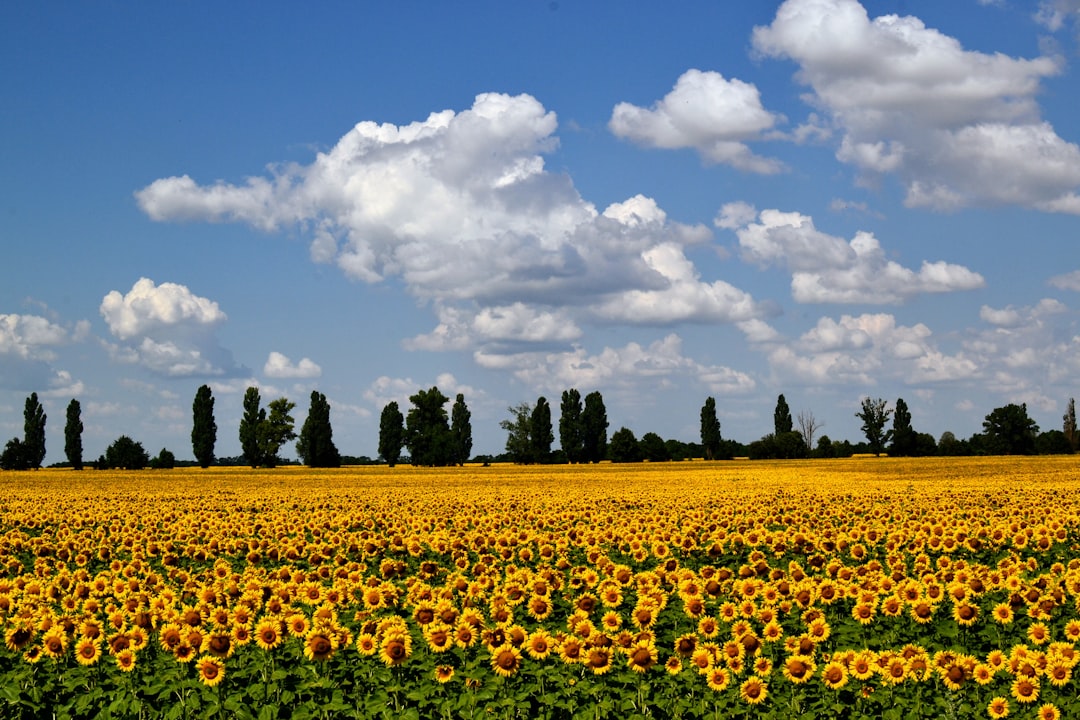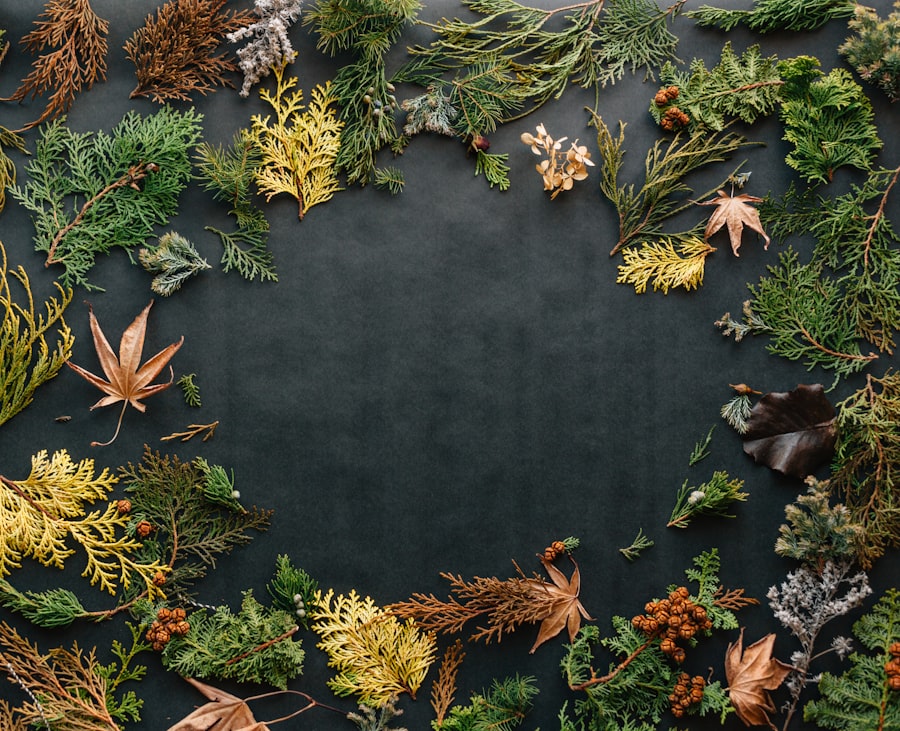Harvesting Sunflower Seeds: Tips and Tricks

Sunflower seeds have a long history and have been used for various purposes throughout the years. They are believed to have originated in North America and were cultivated by Native Americans for their oil and nutritional value. Today, sunflower seeds are enjoyed all over the world and are used in a variety of ways, including as a snack, in baking, and as a topping for salads and other dishes.
In addition to their versatility, sunflower seeds also offer numerous nutritional benefits. They are an excellent source of healthy fats, including monounsaturated and polyunsaturated fats, which can help reduce the risk of heart disease. Sunflower seeds are also rich in protein, fiber, vitamins, and minerals such as vitamin E, magnesium, and selenium. These nutrients contribute to overall health and can support various bodily functions.
Key Takeaways
- Sunflower seeds are a nutritious and versatile food that can be used in a variety of recipes.
- The best time to harvest sunflower seeds is when the back of the flower head turns yellow and the petals have fallen off.
- To prepare sunflowers for harvesting, cut the stem and hang the flower heads upside down in a dry, well-ventilated area.
- Mature sunflower heads can be identified by their yellow color, drooping appearance, and the presence of black and white striped seeds.
- Harvesting sunflower seeds by hand involves removing the seeds from the head and separating them from the chaff.
- Tools such as a garden fork or a seed stripper can be used to make the harvesting process easier and more efficient.
- Drying sunflower seeds for storage involves spreading them out in a single layer and allowing them to air dry for several days.
- To store sunflower seeds for longevity, keep them in an airtight container in a cool, dry place.
- Roasting sunflower seeds is a popular way to enhance their flavor and make them more crunchy.
- Sunflower seeds can be used in a variety of recipes, including salads, trail mix, and baked goods.
Best Time to Harvest Sunflower Seeds
Determining the best time to harvest sunflower seeds is crucial to ensure optimal flavor and quality. Several factors should be considered when deciding when to harvest, including the variety of sunflower, weather conditions, and the intended use of the seeds.
One of the key signs of maturity in sunflower heads is when the back of the flower head turns from green to yellow or brown. The petals will also start to dry out and fall off. Another indicator is when the seeds begin to loosen from the head and can be easily removed by rubbing them with your fingers.
Preparing Sunflowers for Harvesting
Proper care and maintenance of sunflowers before harvesting can help ensure a successful harvest. It is important to provide adequate water and nutrients to the plants throughout their growth cycle. Regularly check for pests or diseases and take appropriate measures to control them.
Before harvesting, it is recommended to remove any dead or dying leaves from the plant. This will allow better airflow and reduce the risk of mold or mildew developing on the seeds during storage. It is also a good idea to remove any damaged or discolored flower heads to prevent them from contaminating the rest of the seeds.
How to Identify Mature Sunflower Heads
| Metrics | Description |
|---|---|
| Color | Mature sunflower heads have a yellow or brown color. |
| Petals | The petals of mature sunflower heads are dry and wilted. |
| Seeds | The seeds of mature sunflower heads are plump and firm. |
| Size | Mature sunflower heads are typically larger than immature ones. |
| Stem | The stem of mature sunflower heads is dry and brown. |
Mature sunflower heads have several distinguishing characteristics. The back of the flower head will have turned from green to yellow or brown, and the petals will have dried out and fallen off. The seeds will be plump and firm, and they will easily detach from the head when rubbed with your fingers.
It is important to differentiate between mature and immature sunflower heads when harvesting. Immature heads will have green backs and tightly closed petals. The seeds inside will be small and underdeveloped. Harvesting immature heads will result in lower-quality seeds with less flavor and nutritional value.
Harvesting Sunflower Seeds by Hand
Harvesting sunflower seeds by hand is a simple and straightforward process. Here is a step-by-step guide to help you:
1. Wait until the sunflower heads are fully mature, as indicated by the yellow or brown backs and dried-out petals.
2. Cut the flower head from the stem using a sharp knife or shears, leaving a few inches of stem attached.
3. Hold the flower head over a clean container or bucket.
4. Rub the seeds with your fingers, applying gentle pressure to loosen them from the head.
5. Allow the seeds to fall into the container as you rub them.
6. Continue rubbing until all the seeds have been removed from the head.
7. Discard any debris or unwanted parts of the flower head.
To make the process more efficient, it is helpful to have multiple containers or buckets available so you can harvest several flower heads at once.
Using Tools to Harvest Sunflower Seeds

While harvesting sunflower seeds by hand is a viable option, using tools can make the process faster and more efficient, especially if you have a large number of sunflowers to harvest. There are several tools and equipment available specifically designed for harvesting sunflower seeds.
One popular tool is a seed stripper, which is a handheld device with rubber fingers that strip the seeds from the head when rolled over it. Another option is a seed harvester attachment for a drill, which can be used to quickly and easily remove the seeds from the flower heads.
Using tools can save time and effort, but it is important to note that they may not be suitable for all types of sunflowers or harvesting conditions. It is recommended to test the tools on a small scale before using them extensively.
Drying Sunflower Seeds for Storage
Drying sunflower seeds before storage is essential to prevent mold or mildew growth and ensure their longevity. Moisture can cause the seeds to spoil and become inedible.
There are several methods for drying sunflower seeds. One common method is air drying, where the seeds are spread out in a single layer on a clean, dry surface and left to dry naturally. This process can take several weeks, depending on the humidity levels in your area.
Another option is to use an oven or dehydrator to speed up the drying process. Spread the seeds out on a baking sheet or dehydrator tray and set the temperature to around 150°F (65°C). Stir the seeds occasionally to ensure even drying.
Storing Sunflower Seeds for Longevity
Proper storage is crucial to maintain the freshness and quality of sunflower seeds. Here are some best practices for storing sunflower seeds:
1. Ensure the seeds are completely dry before storing them.
2. Store the seeds in an airtight container, such as a glass jar or plastic bag.
3. Keep the container in a cool, dark place, away from direct sunlight and heat sources.
4. Avoid storing the seeds near strong-smelling foods, as they can absorb odors.
5. Check the seeds periodically for any signs of spoilage, such as mold or an off smell.
6. If storing for an extended period, consider placing the container in the refrigerator or freezer to further extend the shelf life.
By following these guidelines, sunflower seeds can be stored for several months to a year without losing their flavor or nutritional value.
Roasting Sunflower Seeds for Consumption
Roasting sunflower seeds enhances their flavor and makes them more enjoyable to eat. Here is a step-by-step guide to roasting sunflower seeds:
1. Preheat the oven to 350°F (175°C).
2. In a bowl, toss the sunflower seeds with a small amount of oil (such as olive oil) and your choice of seasonings, such as salt, pepper, or spices.
3. Spread the seasoned seeds in a single layer on a baking sheet.
4. Roast the seeds in the preheated oven for about 10-15 minutes, or until they turn golden brown.
5. Stir the seeds occasionally during roasting to ensure even browning.
6. Remove the baking sheet from the oven and let the seeds cool completely before storing or consuming.
Roasted sunflower seeds can be enjoyed as a snack on their own or used as a topping for salads, soups, or baked goods.
Sunflower Seed Recipes and Uses
In addition to snacking and topping dishes, sunflower seeds can be incorporated into various recipes and used in different ways. Here are some ideas:
1. Sunflower Seed Butter: Similar to peanut butter, sunflower seed butter is a delicious and nutritious alternative for those with nut allergies. Simply blend roasted sunflower seeds in a food processor until smooth and creamy.
2. Sunflower Seed Pesto: Replace pine nuts with sunflower seeds in your favorite pesto recipe for a unique twist. Blend roasted sunflower seeds with fresh basil, garlic, Parmesan cheese, and olive oil until smooth.
3. Sunflower Seed Granola: Add roasted sunflower seeds to your homemade granola recipe for extra crunch and flavor. Combine them with oats, nuts, dried fruits, and sweeteners of your choice.
4. Sunflower Seed Bread: Incorporate sunflower seeds into your bread dough for added texture and taste. Mix them into the dough before baking or sprinkle them on top for a decorative touch.
Sunflower seeds are not only delicious but also packed with nutrients that can benefit your health. Harvesting sunflower seeds can be a rewarding experience, whether done by hand or with the help of tools. Properly drying and storing the seeds will ensure their longevity and freshness. And don’t forget to explore the various recipes and uses for sunflower seeds to enjoy their versatility in your meals and snacks. So go ahead and start growing your own sunflowers and enjoy the process of harvesting and using their nutritious seeds.
If you’re looking for a comprehensive guide on how to get the sunflower seeds, look no further than this informative article on Lawn World’s website. This article provides step-by-step instructions and valuable tips on harvesting sunflower seeds. From choosing the right time to harvest to properly drying and storing the seeds, this article covers it all. Check out the article here for all the information you need to successfully collect and enjoy your sunflower seeds.
FAQs
What are sunflower seeds?
Sunflower seeds are the edible seeds of the sunflower plant. They are a rich source of nutrients, including protein, healthy fats, and vitamins.
Where can I find sunflower seeds?
Sunflower seeds can be found in most grocery stores, health food stores, and online retailers. They are often sold in bulk or in packages.
How do I choose the best sunflower seeds?
When choosing sunflower seeds, look for seeds that are plump and uniform in size. Avoid seeds that are discolored or have a rancid smell.
What are the health benefits of sunflower seeds?
Sunflower seeds are a good source of protein, healthy fats, and vitamins. They may help lower cholesterol levels, reduce inflammation, and improve heart health.
How do I store sunflower seeds?
Sunflower seeds should be stored in an airtight container in a cool, dry place. They can also be stored in the refrigerator or freezer to extend their shelf life.
How do I roast sunflower seeds?
To roast sunflower seeds, spread them out in a single layer on a baking sheet and bake at 350°F for 10-15 minutes, stirring occasionally, until golden brown. Allow them to cool before eating.



